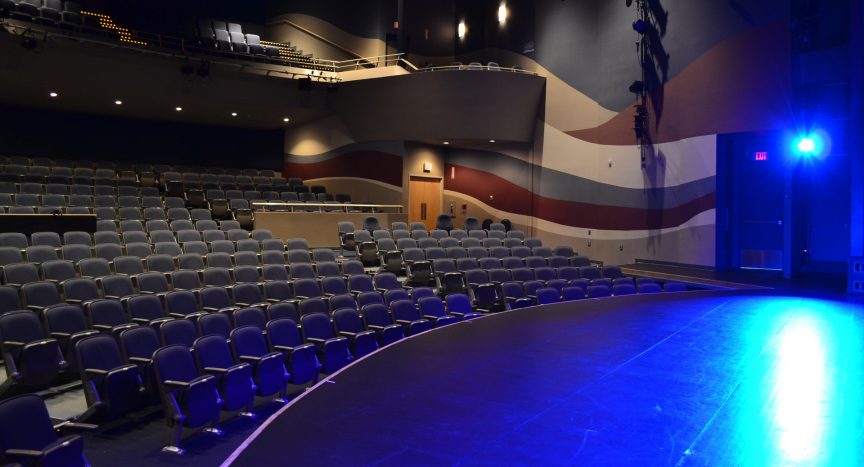The Canada Emergency Wage Subsidy should help many performing arts organizations and businesses keep their staff on payroll during the confinement period. However, publicly-owned performing arts facilities are not eligible for the program. What are these institutions? What role do they (normally) play in the performing arts ecosystem? And what role can we expect them to play in the long-range recovery?
Publicly-owned and operated performing arts facilities are found within all levels of government as well as within universities, colleges and schools. Some are used almost exclusively for educational or community purposes, but many present series of professional performances for the public.
The National Arts Centre and the Confederation Centre for the Arts are two well-known federal institutions. Yet, the most prevalent type of publicly-owned performing arts presenting organization is by far the municipal presenter. In the Vitality and Impact of Arts Presenting, of all 250 survey respondents, 21% (52) were part of a municipal government. 3% (8) were part of a school or university, a provincial/territorial government or the federal government.
According to the Vitality and Impact of Arts Presenting:
- Municipal presenters are among the largest series presenters. The median number of artists presented was 50 per year (compared to 33 for all respondents). The median artist fees were $126,000 (compared to $82,500).
- Municipal presenters are the least likely to receive funding from the Canada Arts Presentation Fund: only 35% of municipal respondents received this funding (the average for all respondents was 62%).
- Municipal presenters tend to have larger numbers of staff members: the median number of full-time paid staff was 7 for municipal venues and 4 for non-municipal (this does not take into account the often very large numbers of part-time, contract, and casual staff)
- Respondents who were neither non-profit, charities, nor municipal had a relatively similar profile to municipal presenters. This group included university presenters as well as provincially or federally owned corporations.
Municipal, university and other publicly-owned presenting organizations are not eligible for the Canada Emergency Wage Subsidy and will probably not be eligible for the Emergency Support Fund for Cultural, Heritage and Sport Organizations (announced April 17). Yet, they represent a significant segment within the live performance ecosystem and are essential connectors in touring routes. This is particularly true in Ontario, in Alberta and in British Columbia, where many municipal presenters contribute to the vitality of the ecosystem.
“With such a large proportion of our group being municipal or education funded, provincial funding models are not available and the network relies on federal funds for programming heavily. These facilities serve as mid-points for many national tours. Without these dates, tours become logistically challenging immediately and directly affecting our largest national acts.”
Josh Gennings, Theatre Supervisor of the Shell Theatre at the City of Fort Saskatchewan, as part of consultations led by CAPACOA
Municipal and publicly-owned presenting facilities are indeed juncture points in touring circuits that also involve not-for-profit presenters in rural and more remote areas. When a national tour is made possible by a group of municipal presenters, these other presenters join in on the tour and rural audiences get the opportunity to connect with artists that might otherwise not have visited their community (or their province).
“These rural presenters are the heart and soul of the industry, servicing areas outside of the major cities and truly injecting culture into the ENTIRE province,” said Josh.
Unfortunately, both municipal and non-municipal presenters are suddenly on incredibly uncertain ground. No one is certain when venues will be able to reopen, or whether audiences will feel comfortable attending when they do. For venues that are part of large bureaucracies like municipalities or post-secondary institutions, decisions around how to approach cancelling, rescheduling, and (eventually) selling shows is even more difficult, as decisions to extend closures come down from the top on a rolling basis and often at short-notice.
According to available information, many municipal presenters still have their full-time staff on payroll, while part-time and casual workers have been laid-off or are simply not scheduled. If however the number of lay-offs in the library sector is an indicator of what to expect among municipal presenters, then there may no longer be any presenting staff in place when restricting orders are lifted and postponed performances can finally be rebooked. Already, at least five municipalities have redeployed their full-time theatre staff. Will those return to their usual affectation after the crisis?
It is hard to say how municipal and publicly-owned presenting organizations will make it through the COVID-19 crisis without access to some form of support from the federal government. It’s however fairly easy to predict that they will, more than ever, have a crucial role to play in the recovery of the performing arts sector, whenever touring activities can resume.
The COVID-19 pandemic has brought a daily avalanche of constantly-shifting news, concerns, updates, and government responses. Presenters, agents, and artists are all trying to grasp a new and rapidly-evolving reality. This is why CAPACOA, with support from Ontario Presents, has determined to document the changing state of the situation, as you report it to us during our online gatherings. We hope that our weekly Chronicles of a Pandemic and the Performing Arts will help those of us in the sector, and those looking to support it, to grasp our unique situation as it continues to evolve.



